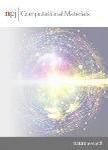Grain boundary effects in high-temperature liquid-metal dealloying: a multi-phase field study
作者机构:Department of Materials Science and EngineeringUniversity of CaliforniaBerkeleyCA 94720USA Materials Science and Technology DivisionLos Alamos National LaboratoryLos AlamosNM 87545USA
出 版 物:《npj Computational Materials》 (计算材料学(英文))
年 卷 期:2023年第9卷第1期
页 面:1039-1049页
核心收录:
学科分类:08[工学] 080502[工学-材料学] 0805[工学-材料科学与工程(可授工学、理学学位)]
基 金:This research used resources of the National Energy Research Scientific Computing Center a DOE Office of Science User Facility supported by the Office of Science of the U.S.Department of Energy under Contract No.DE-AC02-05CH11231 using NERSC awards BES-ERCAP0020694 and BES-ERCAP0023528
摘 要:A multi-phase field model is employed to study the microstructural evolution of an alloy undergoing liquid dealloying,specifically considering the role of grain boundaries.A semi-implicit time-stepping algorithm using spectral methods is implemented,which enables simulating large 2D and 3D domains over long time scales while still maintaining a realistic interfacial *** reveal a mechanism of coupled grain–boundary migration to maintain equilibrium contact angles with the topologically complex solid–liquid interface,which locally accelerates diffusion-coupled growth of a liquid channel into the *** mechanism asymmetrically disrupts the ligament connectivity of the dealloyed structure in qualitative agreement with published experimental *** grain boundary migration-assisted corrosion channels form even for precursors with small amounts of the dissolving alloy species,below the parting *** activation of this grain boundary dealloying mechanism depends strongly on grain boundary mobility.



